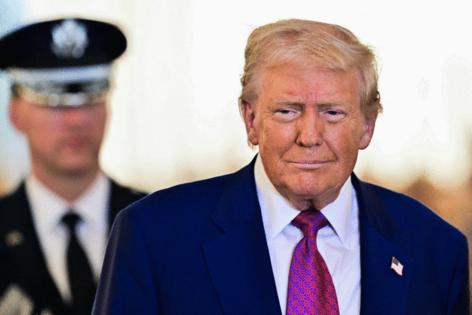Trump to keep 30% China tariffs through late 2025, analysts say
Published in News & Features
Donald Trump’s tariffs on China will likely remain at a level expected to severely curtail Chinese exports to the U.S. after the 90-day truce, analysts and investors say, suggesting Beijing may have to endure further economic pain despite active talks.
U.S. levies on Chinese products imposed this year will likely hold at 30% through late 2025, according to a Bloomberg survey. While much lower than before the thaw this week, the current rate is high enough to wipe out 70% of Chinese shipments to the world’s largest economy in the medium term, Bloomberg Economics has projected.
The results of the survey, conducted Wednesday and Thursday with 22 respondents, reveal a low expectation for trade negotiation to quickly undo duties Trump imposed on China during his second term. Official data due Monday are forecast to show a slowdown in China’s industrial output in April as tariff threats weighed on exports, according to a separate survey.
“We expect that trade negotiations to end up in shallow surface level deals,” said Kelly Chen, an economist with DNB Bank. “There is not enough time for the relative positions of U.S. and China to change materially enough” before the 2026 U.S. mid-term election that will serve as a potential deadline for a deal, she said.
Highlighting the uncertainty over the countries’ ability to resolve their conflict, expectations become more divided further out into the future, with seven respondents seeing tariffs dip below 30% in six months’ time while six projecting higher levies.
If the U.S. and China reach a final trade agreement, the tariffs could come down to 20%, according to the median forecast.
Respondents overwhelmingly predict that tariffs from Trump’s first term will remain, as lowering them would be a major concession that may anger his base. Those levies average about 12%, according to estimates by Bloomberg Economics.
Trump’s tariff policy on Chinese goods is one of the biggest variables affecting the global economy and markets this year. Chinese assets will likely trade in a narrow range near current levels through year-end under the cloud of tariff and stimulus uncertainties, respondents said.
By the end of 2025, the yuan is forecast to hold near 7.2 per dollar, the median estimate from 17 participants showed. With speculation about a Beijing-led devaluation easing, the currency may find an anchor as authorities are expected to prevent rapid capital outflows or excessive inflows.
“Good news on tariffs is also likely to tone down Chinese policy easing, suggesting a more limited upside,” said Robert Gilhooly, senior EM economist at Aberdeen Investments, who expects tariffs to settle at around 50%. “As damage is revealed and the economy slows we expect the authorities will eventually condone an FX depreciation.”
Mainland stocks may grind higher, with the CSI 300 Index potentially reaching 4000, a roughly 2% gain from Thursday’s close near 3900. Early export shipments seeking to avoid tariffs could boost corporate earnings, while tech advances and structural economic shifts are also seen lending support.
Chinese 10-year government bond yields may face hurdles to decline further, with the median estimate at 1.7% for this year. That would be little changed from current levels, as markets see limited impetus for a rapid fall in yields due to fading hopes for imminent policy easing.
Official statistics scheduled to be released Monday morning will likely show industrial output expanded 5.9% in April from a year ago, slowing from the 7.7% gain in March, according to a regular survey of economists. Exports expansion moderated in the month, and factory activity also weakened.
Retail sales likely grew at a brisk 6% in April, a slight pickup from March. Fixed-asset investment growth is forecast to hold steady at 4.3%, edging up from the prior month.
Several of the respondents in the tariff survey cautioned against forecasting in the first place, given the unpredictability of Trump’s tariff moves.
“Trump’s first term should serve as a warning that we are not yet out of the woods and agreements are not guaranteed to hold,” said Sam Jochim, an economist at EFG Asset Management. “Risks due to elevated uncertainty over the U.S.’s trade policy remain high.”
____
(With assistance from Ran Li, Qizi Sun, Jing Zhao and Shulun Huang.)
©2025 Bloomberg L.P. Visit bloomberg.com. Distributed by Tribune Content Agency, LLC.







Comments